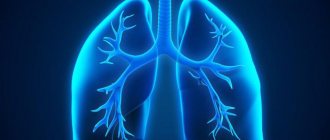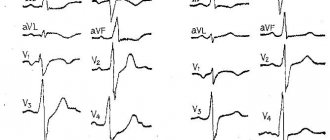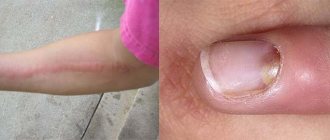A carbuncle is an acute purulent-necrotic inflammatory process involving several nearby hair follicles and sebaceous glands.
The process originates in the epidermis from multiple adjacent pustules, but quickly grows and spreads to the subcutaneous tissue with the formation of a general infiltrate. After the dead areas are removed, a deep ulcer opens, which heals with the formation of a rough scar. The pathology is treated by a dermatologist and surgeon.
Carbunculosis - what is it?
A carbuncle is an acute purulent inflammation that occurs around the hair follicles and sebaceous glands. It develops in the epidermis and penetrates the subcutaneous tissue.
Carbuncles have the property of rapid growth; formations can reach up to 10 cm in diameter. They are most often multiple and represent a cluster of adjacent abscesses.
The affected area is susceptible to tissue necrosis. The rapid development of a purulent necrotic process is a reason to seek help from a dermatologist.
In the old days, carbuncle was called charcoal for its dark color - translated, the word “carbuncle” means “coal”.
According to the International Classification of Diseases, each disease has its own ICD-10 code. Carbuncle, along with skin abscess and boil, is designated as L02.
The carbuncle of the face has the code L02.0, the neck - L02.1, the torso - L02.2, and so on.
Diagnosis of pathology in men, women and children
Based on its characteristic appearance, a specialist will be able to accurately diagnose a carbuncle. But to identify the causes of the disease, the following methods will additionally be used:
- Survey. The doctor finds out what preceded the development of the inflammatory process, whether the patient has chronic diseases, whether he had to deal with a carbuncle before.
- Blood analysis. The study allows you to determine the level of leukocytes and ESR. In this way, it is possible to identify at what stage the inflammatory process is.
- Bacterial seeding of carbuncle contents. The study helps to differentiate ordinary purulent inflammation from anthrax. In addition, the technique makes it possible to most accurately select an antibiotic, taking into account the sensitivity of the pathogenic microflora.
- General urine analysis. The study is mandatory upon admission to the hospital. By studying the composition of urine, it is possible to diagnose concomitant diseases.
The doctor will be able to make a diagnosis at the first examination
How to distinguish from an abscess and a boil
A qualified surgeon can easily differentiate a carbuncle from a skin abscess or furunculosis. The main differences of the disease:
- extensive inflammation;
- damage to the deep layers of the epidermis.
Causes
The causative agents of the pathological inflammatory process are pathogenic microorganisms that enter damaged skin and cause the development of infection.
More often the culprit of carbunculosis is staphylococcus, less often - streptococcus. Enterococci, anaerobic bacteria, and Pseudomonas aeruginosa can also provoke the disease.
Sloppy and unkempt people who neglect hygiene rules are much more likely to get sick. It’s not just household unsanitary conditions that are dangerous.
Harmful working conditions also contribute to the development of pathology - frequent contact with petroleum products, machine oils, dust, coal, cement, lime.
What other factors provoke carbunculosis:
- reduced immunity due to severe illness;
- chronic diseases of internal organs;
- anemia, vitamin deficiency;
- diabetes and other metabolic disorders;
- increased secretion of the sebaceous glands;
- microtraumas of the skin, boils, scratching in places of insect bites;
- severe physical and psychological exhaustion.
Malignant anthrax carbuncle
Anthrax (anthrax) is a particularly dangerous acute infectious disease that occurs in the form of a benign skin lesion or in a severe, generalized form.
The causative agent of the disease is the anthrax bacterium (Bacillus anthraxis). The natural reservoir of the pathogen is the soil (the pathogen can persist in it for a long time).
The source of infection for humans are cows, bulls, sheep, etc. In rare cases, anthrax infection can be associated with hares, arctic foxes, etc.
Attention. Infection with bacilli occurs during the dressing of skins of infected animals, cutting meat, caring for animals (the pathogen can be excreted in urine and feces), etc.
It is also possible to become infected by inhaling infected dust particles or eating contaminated meat. A rare mechanism of infection is vector-borne transmission associated with the bites of horse flies or burner flies.
Anthrax carbuncle most often occurs in veterinarians, employees of the agricultural industry, and people involved in animal husbandry or tanning.
For reference. After bacteria enter the body, damage to the vascular endothelium develops, vascular permeability is disrupted, severe microcirculatory disorders develop, hemorrhagic-serous infiltrates, hemorrhages, and severe edema develop.
With a generalized course, the following appears:
- septicemia,
- sepsis,
- infectious-toxic shock,
- thrombohemorrhagic syndrome,
- multiple organ failure.
In the localized cutaneous form, after the end of the incubation period (from two to fourteen days), a reddish-blue spot resembling an insect bite appears at the site of the anthrax bacilli.
Localization
The “favorite” places for the localization of carbuncles are the maxillofacial area and the back of the neck.
Pathology also develops:
- on the back, between the shoulder blades;
- on the buttock;
- under the arm;
- on the lower back.
More often, carbuncles appear in those places of the body where fatty tissue is more developed and has a looser structure.
Ulcers on the face, for example, in the lip area, on the chin or carbuncle of the nose, are the most dangerous.
Bacteria from this area, using the bloodstream and lymphatic vessels, can penetrate the veins inside the skull and thereby lead to inflammation in the brain and damage to the nerve trunks .
The formation of carbuncles on the chest and limbs is possible, although ulcers appear on the arm or leg quite rarely.
Carbunculosis in the groin in women can develop due to improper treatment of boils, as a complicated form of this pathology.
Therefore, ulcers on the labia should be treated in a timely manner by consulting an experienced doctor.
Purulent inflammation can also affect internal organs. Recently, doctors have noted an increase in cases of kidney carbuncle, a necrotic lesion in which an infiltrate forms in the cortex.
If you are interested in what is the proper treatment for seborrheic dermatitis of the scalp, read our publication.
The causes, characteristic symptoms and treatment of herpes zoster are described in detail in this article.
Symptoms and signs of the disease
Carbunculosis, like other diseases, has general and local symptoms. It is important to notice the signs inherent in this pathology in time and seek medical help.
Manifestations of general symptoms are as follows:
- body temperature quickly rises to 39 – 40°C;
- loss of appetite;
- nausea, vomiting;
- headache occurs;
- there is general weakness, increased heart rate;
- If left untreated, sepsis may develop.
How do specific symptoms manifest themselves?
- a small nodule appears on the skin, which grows quickly, becoming quite painful;
- the skin around the infiltrate is inflamed, tense, purple or blue;
- the affected area is covered with small multiple holes from which purulent contents are released;
- swelling of the tissues increases, the areas of the abscesses are hot to the touch, any movement causes an attack of pain, often jerking;
- after opening the carbuncle, pus flows out of it; it looks like a deep ulcer with jagged, blackened edges;
- healing of the affected area occurs slowly, due to tissue necrosis, scars form.
If the pathology becomes malignant, the patient may suffer from neuralgic pain, fever, and fall into a state of prostration and delirium.
Folk remedies for home treatment
It’s worth mentioning once that there are a lot of remedies from the “traditional medicine” category for the treatment of carbuncles. But they can only be used if the patient has no symptoms of intoxication and the doctor does not insist on his hospitalization.
- Calendula ointment. You can prepare it by mixing dry and crushed calendula flowers and lard (pork) in a 1:4 ratio in a ceramic bowl. Then the resulting mass is placed in a water bath and completely melted, mixed thoroughly and left until completely cooled. Apply calendula ointment to the carbuncle that has not yet ruptured; do not apply a bandage. If possible, you need to collect calendula flowers from a living plant and “extract” the juice from them. The amount of juice should be such that you can thoroughly moisten a gauze napkin in it. It is applied to the carbuncle and held for 30-60 minutes.
- Compresses with sweet clover. You need to take the flowers of this plant in the amount of 2 tablespoons and pour in vegetable oil (you can use any oil, but olive oil is preferable), leave in a warm place for an hour. Then a gauze napkin is soaked in oil, wrung out slightly and placed on the resulting bulge. The compress lasts for 1-2 hours, then a break of 2-3 hours is taken and the procedure is repeated. A compress from sweet clover accelerates the maturation of the carbuncle and alleviates the patient’s condition - his pain disappears and his body temperature decreases at the site of direct localization of the purulent-inflammatory process. It is very useful to make such compresses at the same time as taking a decoction of this plant orally. Preparing the decoction is simple: add 2 tablespoons of plant material to a liter of water and boil over low heat for 5-7 minutes. The resulting amount of decoction should be drunk in equal parts throughout the day.
- St. John's wort. This is also a unique plant that can be used both internally and externally - the treatment of carbuncle will be effective precisely with such a complex “therapy”. First you need to prepare a paste from fresh leaves and flowers of St. John's wort - it will be used for compresses. The resulting slurry is applied to the site of localization of the purulent-inflammatory process, covered with a bandage, and left for a couple of hours. You need to make 2-3 such compresses during the day. St. John's wort infusion is consumed orally, prepared from a tablespoon of plant material and 200 ml of boiling water (infuse for 20-30 minutes, filter and cool). The resulting amount of medicine should be drunk throughout the day.
- Plantain lotion. You need to take fresh plantain leaves, wash them thoroughly and grind them into a paste. It is applied to the site of localization of the purulent-inflammatory process and covered with a bandage. Such dressings can be applied 2 times a day, each time for a maximum of 30 minutes. In parallel with plantain treatment, it is recommended to prepare a chicory drink for the patient. Just don’t use a ready-made instant drink, you will need chicory roots - they need to be crushed and brewed in a proportion of 2 teaspoons per 200 ml of boiling water. The resulting drink should be drunk in small sips throughout the day, after cooling it.
Treatment of carbuncle with folk remedies is possible only after consulting a doctor. If there is no opportunity to contact a specialist, then you need to carefully monitor the patient’s condition: if there is a persistent increase in body temperature, nausea and vomiting, severe weakness and dizziness, you should immediately call an ambulance team.
What does a carbuncle look like (photo)
How is it different from a boil?
The main difference between a carbuncle and a furuncle is that a boil affects only one hair follicle or sebaceous duct, while a carbuncle affects several follicles.
What else is the difference between these pathologies:
- carbuncles are accompanied by penetration of the inflammatory process deep into the skin - into the dermis and hypodermis. With furunculosis such lesions are not observed;
- An area of necrotic skin with carbunculosis may acquire a black color, but this is not typical for boils;
- The localization of boils is more extensive - any part of the body except the soles and palms. The places where boils occur are limited - pathology selects special areas, most often the face, the occipital region, and ulcers also form on the butt, in the perineum, on the back;
- the inflammatory reaction with furunculosis is weaker than with carbunculosis. Accordingly, the general condition varies: in the first case, the state of health is relatively normal, but carbuncles are accompanied by a severe clinical picture;
- a purulent-necrotic core with a carbuncle takes longer to form than with a boil - in 2-3 weeks;
- pus from the area affected by the carbuncle comes out through multiple holes, and in case of furunculosis - through one;
- A carbuncle is fraught with the formation of a noticeable scar; after a boil, no such traces remain.
Carbunculosis is more severe, intoxication is stronger, and the disease requires more serious treatment, often in a hospital.
Classification: types and stages
In its development, the carbuncle goes through 3 main stages:
- Infiltration is the formation of hard, dense nodules that merge into a single inflamed area (infiltrate). The skin in this area turns red, then acquires a bluish tint. The pain increases as the swelling increases. At the infiltration stage, the affected area can reach a size of up to 10 cm or more.
- Suppuration - the maturation of carbuncles is accompanied by their opening and the release of pus, sometimes with ichor. During this period, the skin resembles a sieve - purulent contents with necrotic masses ooze through multiple holes. This process lasts from 2 to 3 weeks. It is accompanied by general intoxication of the body.
- Necrosis and rejection - at this stage the purulent process stops, the affected tissues gradually die. An ulcer forms, which is filled with granulation - new young tissue, then a large scar is formed, welded to the skin. This stage takes up to 3 weeks.
The classification of carbuncles includes 3 main types:
- anthrax;
- emphysematous;
- purulent.
Anthrax
This type of carbuncle develops at the site of penetration of the anthrax pathogen into the skin.
Initially, a small pimple forms, inside which a pustule with cloudy contents soon appears.
After opening the vesicle, a scab appears at this place, which very quickly acquires a dark, almost black color.
Specific signs of anthrax carbuncle are:
- no pain;
- feeling of numbness in the affected area;
- formation around the scab of multiple small vesicles with serous and bloody contents;
- no suppuration.
Emphysematous
This type of carbunculosis is practically not diagnosed in people.
Cattle, mostly young animals, are most often affected. The course of the disease is usually acute, fraught with death of animals.
The disease is characterized by crunchy tumors in the muscles, increased temperature, and fever. The peak of infection occurs in the summer and autumn months.
Purulent
Of all types of carbuncle, the most common is purulent, caused in most cases by Staphylococcus aureus.
Less commonly, other pathogenic microorganisms provoke the disease.
The disease consists of the development of purulent lesions of the epidermis and subcutaneous tissue around the sebaceous glands and hair follicles.
Single formations merge into one large affected area - infiltrate.
Patients with a purulent carbuncle are often sent to the hospital, as in many cases they require surgical treatment.
Causes of appearance and development factors
Since staphylococcal and anthrax carbuncles are provoked by different bacteria, inflamed lesions form on the skin in people for different reasons.
What causes staphylococcal carbuncle
Golden, less often white, staphylococcus penetrates through hair follicles and sebaceous glands into the deep layers of the skin, where it begins to destroy connective tissue and causes infected microthrombi in the blood vessels of the skin. As a result, the infectious zone quickly expands.
The source of infection is the person himself. Staphylococci are opportunistic bacteria; they live peacefully on human skin until its immunity weakens. They can penetrate the skin through microtraumas.
Features of the occurrence of anthrax skin lesions
The infection is transmitted to humans through contact from sick domestic animals (pigs, goats, cattle). The gateway for infection is injured skin, rarely the mucous membranes of the nose and mouth.
At the site of infection, a pathological focus with serous contents and necrotic tissue forms against the background of swelling and redness. The infection quickly penetrates the regional lymph nodes, which leads to their inflammation or lymphadenitis.
The two types of disease are united by the fact that they develop in weakened patients, as well as in people with high blood glucose levels, obesity and excessive sweating.
Diagnostics
Although diagnosing carbunculosis is not difficult, identifying the disease yourself is dangerous to your health.
A specialist must make the correct diagnosis. It is based not only on an external examination and anamnesis.
Sometimes laboratory tests are required:
- blood test - general to assess the level of inflammation in the body, for sugar - to find out whether the patient suffers from diabetes, microbiological - to determine whether there is a septic infection;
- bacteriological analysis of exudate from the carbuncle - to identify the causative agent of the disease, its sensitivity to antibacterial drugs and differential diagnosis from anthrax disease (anthrax carbuncle).
Carbuncle should be differentiated from other skin diseases:
- hidradenitis (its photo and treatment can be found here);
- phlegmon (more details about this disease here);
- boil.
First aid
The sooner treatment is started, the better the prognosis. In this case, it will be possible to get rid of the carbuncle without the help of a surgeon. Therapy will be limited to antibacterial therapy and anti-inflammatory drugs.
Provided that a person’s well-being sharply deteriorates and the carbuncle quickly necrotizes, the patient is referred for surgery. It is mandatory to surgically remove the carbuncle, which is caused by anthrax.
If immediately after the appearance of an abscess a person receives quality help, then complications of the carbuncle will not develop.
Basic treatment recommendations:
- Wipe the affected area with alcohol.
- Apply a bandage with Vishnevsky ointment to the carbuncle.
- Contact a surgeon.
If the symptoms of the disease progress rapidly and your health deteriorates sharply, you need to call an ambulance.
Treatment methods for carbuncle
The doctor’s decision to choose outpatient or inpatient treatment depends on the stage and type of carbunculosis, the state of the patient’s immune system and the location of the disease.
Removal of ulcers on the face, neck, head, and armpits must be carried out in the surgical department.
In the hospital, the patient requires bed rest if the carbuncles are localized on the face, it is forbidden to talk and eat solid food, so as not to aggravate the patient’s serious condition.
Medication
Medication therapy is acceptable if the size of the carbuncle is small and it is not located in the facial area, but on the limbs, buttocks, and lower back. It is also important that the development of pathology is not accompanied by complications.
Carbunculosis should be treated with antibacterial drugs. The course of antibiotic treatment takes from 7 to 10 days.
Medicines are usually prescribed in large doses - in the form of tablets and injections:
- Penicillin;
- Biomycin;
- Streptomycin;
- Gentamicin;
- Ceftriaxone;
- Cefazolin;
- Cephalexin;
- Azithromycin;
- Amoxicillin-clavulanate.
Particular care should be taken in the choice of antibiotics and their dosage when treating carbuncles in children.
In the complex therapy of carbuncles, various medications are used:
- painkillers - Solpadeine, Ketanov, Nise, Ketonal;
- drugs to regulate cardiac activity;
- anti-inflammatory – Paracetamol, Ibuprofen;
- sulfonamides (antimicrobial agents) – Norsulfazol, Streptocid, Ftalazol;
- drugs for removing staphylococcal toxins - Duphalac, Polysorb;
- infusion therapy (administration of sodium chloride and glucose solutions) for symptoms of intoxication.
Opened ulcers require careful antiseptic treatment. The wounds themselves and the skin around them should be disinfected:
- brilliant green, iodine;
- Furacilin solution;
- hydrogen peroxide;
- Salicylic alcohol;
- Fukortsin;
- Methylene blue.
After the purulent-necrotic contents are released, the wounds are treated with antibacterial ointments - Methyluracil, Lincomycin, Tetracycline, Levomycetin, Bactroban, Levomikol, Fucicort.
When the affected area heals and a scar forms, it is wise to use ointments and gels that smooth out scar tissue:
- Contractubex;
- Dermatix;
- Zeraderm;
- Kelofibraza;
- silicone patches.
This video describes methods of treating carbuncle in the hospital and at home:
Surgery
Surgical treatment is required in case of severe carbunculosis, formation of a focus of necrosis, difficult drainage of purulent contents, or a sharp deterioration in the patient’s condition.
The operation is performed using local or general anesthesia depending on the severity of the lesion:
- The area of infiltration is dissected to remove dead tissue and pus.
- The wound is washed with antiseptics and drainage is installed to drain the infected contents.
- The cleaned wound is treated with anti-inflammatory and healing ointments.
At the stage of postoperative recovery, antibiotics are prescribed (in a lower dosage than at the beginning of treatment), restorative drugs, and physiotherapy.
Today, there is an effective and fairly gentle method for removing carbuncles using radio waves. The entire procedure takes about half an hour and is done under local anesthesia.
Physiotherapeutic procedures
Physiotherapy is one of the quite effective additional methods of carbuncle treatment:
- X-ray therapy is used at the initial stage of inflammation, the number of procedures is determined by the doctor;
- UHF therapy (exposure to ultra-high frequency electromagnetic fields);
- UFO therapy (irradiation with ultraviolet waves);
- laser and magnetic therapy.
These procedures help to activate blood flow in the area of inflammation, reduce the amount of necrotic tissue and accelerate their rejection, and prevent the spread of infection to healthy skin.
Folk recipes
It is impossible to cure carbuncle with folk remedies alone. “Grandma’s” recipes are good as an addition to drug therapy, and then only at the initial stage - infiltration.
But a carbuncle on the face cannot be treated independently; even at the very beginning of its development, it is necessary to seek medical help.
You should consult a dermatologist regarding the use of any folk remedy. What time-tested treatment methods help in treating carbunculosis at home:
- ointment from calendula flowers - 1 part of the raw material is ground and mixed with 4 parts of lard, left for 5 - 7 hours. Soak a napkin with the resulting product and apply it to the inflamed area;
- the plantain is crushed to a paste consistency and applied to the carbuncle, covering the top with a bandage. Keep it for at least half an hour; during the day you need to make 5 to 6 such compresses;
- St. John's wort can be used for compresses and as an infusion for oral administration. In the first case, fresh leaves are crushed, wrapped in gauze and applied to the carbuncle. Several such compresses are replaced during the day. An infusion for drinking is prepared from 1 tablespoon of the herb, infused for half an hour in a liter of boiling water. Take the medicine 3 times a day;
- to speed up the release of pus from the wound, a mixture of rye bread pulp and chamomile decoction wrapped in gauze is applied to the affected area;
- a compress of sweet clover helps speed up the maturation of the abscess. The flowers of the plant (2 tablespoons) are infused in vegetable oil for a day (1 tablespoon is enough);
- several cloves of garlic are crushed, placed in gauze folded in several layers, and applied to the sore spot;
- Compresses made from flour (you need 1 tablespoon) and the same amount of natural honey reduce the inflammatory process. Mix the ingredients to form a cake, wrap it in gauze and apply to the area of inflammation before going to bed. In the morning, remove the compress.
The video will tell you about the treatment of carbuncles using traditional methods, diet and physiotherapy:
Which doctor treats carbuncle?
When the first signs of a carbuncle appear, you should visit a dermatologist. If it is not possible to cope with the inflammation, then the help of a surgeon is required.
When carbuncles occur regularly in a patient, consultation with an immunologist is required. To cope with the disease, you need to find out the causes of its occurrence. In addition to the specialists listed, the patient may need to consult an endocrinologist, oncologist, hematologist, etc.
Depending on where exactly the carbuncle forms, you need to choose a specialist. If it is located next to the ear, then the help of an otolaryngologist is required. When the carbuncle is concentrated in the groin, the woman should visit a gynecologist.
Complications and consequences
Complications with carbunculosis occur if a staphylococcal infection penetrates deep into tissues and organs, as well as into the meninges.
Provoking factors are considered to be the lack of timely qualified medical care, a significant decrease in immunity, and a weakened state of the body as a result of chronic diseases.
With carbunculosis, there is a risk of negative consequences:
- lymphadenitis and lymphangitis as a result of involvement of lymph nodes and vessels in the inflammatory process;
- erysipelas of the skin;
- purulent meningitis - if the carbuncles are localized in the facial and cervical region;
- soft tissue phlegmon;
- thrombophlebitis and inflammation of the veins (phlebitis);
- vascular bleeding;
- osteomyelitis as a result of penetration of infection into bone tissue;
- sepsis, which can lead to death due to general blood poisoning.
Squeezing out abscesses that form, especially on the face, is strictly prohibited.
In this case, suppuration spreads to nearby areas and penetrates deep into the tissues, causing life-threatening complications.
But with timely and adequate treatment, the prognosis will be favorable even with complicated carbunculosis.
You can learn about the treatment of herpes in intimate places from this material.
The main causes and methods of treatment for jams in the corners of the mouth are discussed in this article.
Photos of the symptoms of infantile roseola are presented here: https://udermatologa.com/zabol/gerp/vnezapnaya-ekzantema-rozeola-u-detey-i-vzroslyh-simptomy-lechenie/
What to do if the carbuncle has opened
If the lid of the pathological focus has opened on its own, then in order to avoid further development of skin inflammation and other complications, you should wash the wound with an antiseptic (peroxide, chlorhexidine, potassium permanganate). Then apply an ointment under the bandage, which will draw out the remaining pus from the inflamed lesion, and also promote the rejection and release of dead tissue (Ichthyol, Levomekol, Levosin).
Those patients who, after opening the carbuncle, have a fever and the swelling has spread to healthy areas of the skin should seek medical help immediately.
Disease prevention
It is easier to prevent the formation of carbuncles than to treat abscesses for a long time and persistently.
Preventive measures mainly come down to strengthening the immune system and maintaining personal hygiene:
- consuming sufficient amounts of vitamins, microelements, fresh vegetables and fruits;
- avoiding overwork, excessive stress, stress, and nervous feelings;
- regular water procedures - shower (even without gel or soap), wiping the skin with a damp towel, baths with decoctions of chamomile, string, oak bark, sage, calendula;
- treating the skin with antiseptic solutions for bites, abrasions, scratches, cuts;
- using only personal hygiene items - washcloths, razors, towels;
- choosing clothes made from natural breathable fabrics, excluding synthetic tight items;
- timely treatment of colds and other diseases;
- alternating loads and proper rest;
- giving up bad habits.
Carbuncles cause a lot of inconvenience - they are painful, unpleasant from an aesthetic point of view, and, most importantly, they are dangerous for the development of severe complications.
You should not experiment on yourself by self-medicating. Leave the choice of appropriate methods to combat the disease to specialists.
Physiotherapeutic procedures
Physiotherapy is one of the quite effective additional methods of carbuncle treatment:
- X-ray therapy is used at the initial stage of inflammation, the number of procedures is determined by the doctor;
- UHF therapy (exposure to ultra-high frequency electromagnetic fields);
- UFO therapy (irradiation with ultraviolet waves);
- laser and magnetic therapy.
These procedures help to activate blood flow in the area of inflammation, reduce the amount of necrotic tissue and accelerate their rejection, and prevent the spread of infection to healthy skin.









